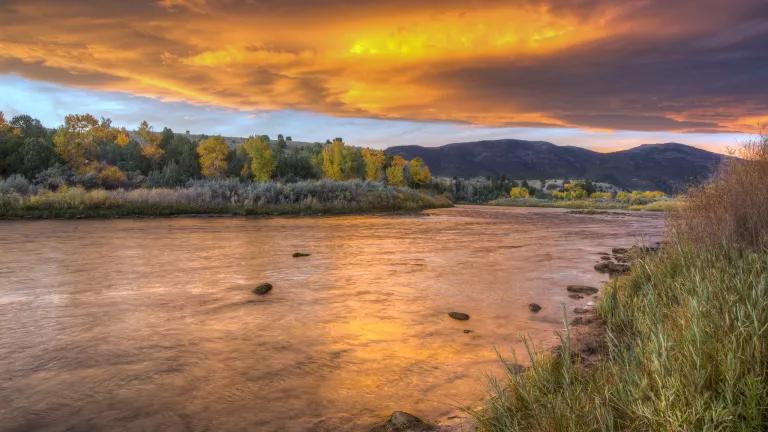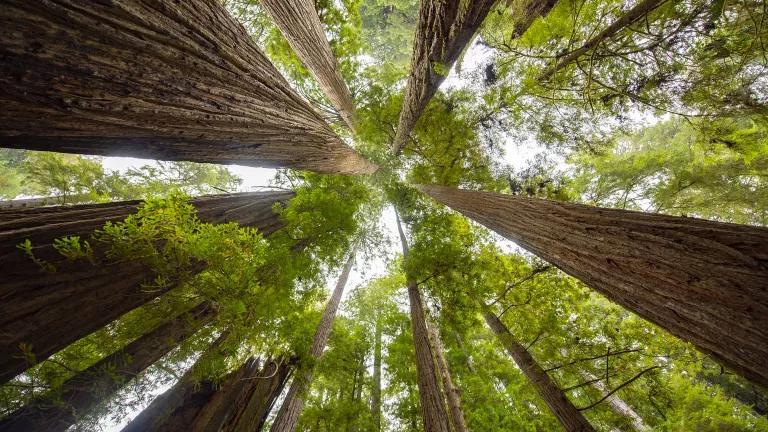We applaud the Senate for confirming Sally Jewell as the new Secretary of the Interior. Jewell brings a strong business background and a personal conservation ethic to the position. We look forward to working with her as she undertakes the essential task of managing the American people’s land.
This is a big responsibility. Millions of people visit national parks every year to experience America’s natural beauty and riveting history. We hike, hunt, and explore hundreds of millions of acres of additional public lands from the coast of Florida to the wetlands of Michigan to the forests of Oregon. And we admire the wild animals that roam our lands, whether it’s the mighty grizzly bear or the tiny Karner blue butterfly.
We can enjoy these splendors—stretching across one-fifth of the United States—because the Interior Department has conserved and safeguarded America’s natural heritage for generations.
Former Secretary of the Interior Ken Salazar, for instance, recently added five new monuments that our children and grandchildren will be able to enjoy. He also strengthened protections in Alaska’s Western Arctic Reserve and mapped out a sound plan for developing clean energy resources on public lands.
But the job of safeguarding America’s natural heritage is getting harder. Nearly one-third of all the energy produced in America takes place on the public lands and waters managed by the Interior Department. Oil and gas companies are clamoring to industrialize even more—often in ways that endanger our shared lands and water and prevent other public uses. Meanwhile, climate change is threatening some of our most beloved natural treasures.
In assuming the role as chief steward of the nation’s lands, wildlife, and waters, Secretary Jewell inherits a long list of looming challenges that will require her deft leadership. The following is a short list that will need her immediate attention:
Take A Timeout in the Arctic Ocean for Oil and Gas Drilling
Shell experienced a string of fiascoes when it tried to drill in the Arctic Ocean last year, from running from a 30-mile-long iceberg to grounding its drilling ship in a storm. Shell’s performance was disastrous, but the truth is no company will prove a match for the forbidding Arctic environment. Now it’s time for the Obama Administration to put this risky and dangerous drilling on hold immediately.
Adopt Meaningful Rules for Fracking
Hundreds of thousands of new oil and gas wells have been drilled in the past decade, and fracking is now occurring in about 30 states. A large portion of this development occurs on public lands, yet the few fracking standards on the books are no match for this explosive growth. The Interior Department issued a draft fracking rule in 2012 that was woefully inadequate and the revised version appears to be even weaker in some areas. Secretary Jewell must issue stronger fracking standards that will truly help protect America’s drinking water from the excesses of the oil and gas industry.
Protect Our Endangered Wildlife, Including Gray Wolves
In the last few years, the Interior Department has fallen short in its charge to protect the nation’s endangered and threatened wildlife. Protections for gray wolves in Wyoming, for instance, were recently lifted by the Fish and Wildlife Service, and the service is likely to remove protections for wolves across the country. Jettisoning safeguards for such a vital and endangered species is premature until wolves occupy a greater amount of their historic range and available habitat.
Stop Big Coal Rip-offs
Big coal companies like Arch and Peabody are buying federal coal in the Powder River Basin from the Interior Department at cut-rate prices, a program that is under three distinct federal investigations. Interior sale documents say the coal must be used to keep domestic energy prices low and promote energy security. Coal companies, however, explicitly say they plan to sell this taxpayer-owned coal overseas for windfall profits—even as they avoid paying the government full royalties on the coal. These manipulations incentivize increased coal mining, a process that contributes to global warming while destroying public land. Secretary Jewell can work with the current investigations and adopt recommended reforms.
Deploy Renewable Energy Smartly
Secretary Jewell’s predecessor, Ken Salazar, created a visionary renewable energy program from scratch that has permitted 37 wind, geothermal, and solar projects that will generate enough clean energy to power over 3 million homes. Yet more work must be done to ensure sensitive wildlife are not sacrificed in the transition to clean energy. In particular, the agency is rushing to adopt a new rule that would allow wind developers to “take” or kill eagles over a 30-year timespan. The Interior Department needs to pull back and work with stakeholders and scientists to find a way to realistically minimize the impacts to eagles as we build more wind resources.
This brief list reveals some of the challenges facing the next Secretary of the Interior. We believe Jewell is the right person to tackle them given her impressive record and experience. We look forward to working with her and the millions of Americans who value our natural heritage to conserve the public’s lands for generations to come.



